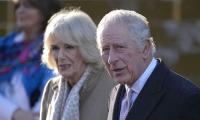If Covid-19 in 2020 was a nightmare, then we have been continuously transitioning from one nightmare to another. Generous fiscal stimulus in the rich world, accommodative monetary policies the world over, and a faster-than-expected recovery from Covid gave rise to global commodity demand, resultant commodity shortage, and a rise in their prices in 2021. At the beginning of 2022, experts believed inflation and commodity supercycles were short-lived, and prices would become moderate as the demand and supply chains settled.
However, Russia’s invasion of Ukraine in February 2022 upended all outlooks. The sanctions on Russian energy and food supplies and the disruption in wheat/sunflower supplies from Ukraine led not only to a commodity shortage but also to a decade-high increase in energy prices, triggering a cost of living crisis.
Global economic activity in 2022 experienced a broad-based and sharper-than-expected slowdown, with inflation higher than seen in several decades (stagflation). The cost-of-living crisis, tightening financial conditions in most regions, and China’s zero covid policy throughout 2022 (till mid-December 2022) all weigh heavily on the analysis of economic pundits.
While we are ready to enter 2023, the IMF has forecast global growth to slow from 6.0 per cent in 2021 to 3.2 per cent in 2022 and 2.7 per cent in 2023. This is the weakest growth profile since 2001, except for the global financial crisis and the acute phase of the Covid-19 pandemic. Global inflation has risen from 4.7 per cent in 2021 to 8.8 per cent in 2022.
After sticking to the reduced interest rates for two years during Covid, central banks in the developed world, in an attempt to contain inflation, increased their interest rates in 2022. Interest rate hikes in the US resulted in an exodus of foreign investment from emerging and developing economies. This also led the local currencies in those countries to lose value against the US dollar.
To compensate for Russian energy, many European countries signed long-term contracts with gas producers in the Gulf States. The prices European buyers could offer to Qatar and the UAE crowded out countries like Pakistan.
Many European economies, such as Germany and the UK, declared an economic recession in 2022. Elevated inflation, balance of payments pressures, recessionary trends in the global economy, and monetary tightening in the developed world presented renewed challenges to developing countries. Of them, oil and/or food-importing lower and middle-income developing countries faced the maximum brunt of the global economic meltdown in 2022.
In the case of Pakistan, the negative impacts of the above-mentioned challenges got further exacerbated due to the devastating floods. The post floods ‘Damage, loss, and needs assessment’ carried out by the Ministry of Planning along with international financial institutes and the UN agencies, estimates total damages to exceed $14.9 billion and total economic losses to reach about $15.2 billion. Estimated needs for rehabilitation and reconstruction in a resilient way are at least $16.3 billion. This number does not include much-needed new investments beyond the affected assets to support Pakistan’s adaptation to climate change and the country’s overall resilience to future climate shocks.
The floods of 2022 affected 33 million people and have undone much of the piecemeal progress on the Sustainable Development Goals. They have potentially pushed up to 9.1 million more people below the poverty line. United Nations Satellite Centre (UNOSAT) imagery indicates an estimated eight million people are still potentially exposed to flood waters or living close to flooded areas. Besides this, loss in the gross domestic product (GDP) as a direct impact of floods is projected to be around 2.2 per cent of FY22’s GDP.
In these circumstances, looking back at the state of the economy in Pakistan in 2022, one does not find many bright spots. The only positive development has been reduction in the year-on-year current account deficit by half (for the first five months of the fiscal year). However, this reduction is achieved by controlling imports, negatively impacting domestic businesses. Decade-high inflation, decade-low foreign exchange reserves, unbridled increase in energy circular debt, historic depreciation of the value of the rupee against the dollar, and consistent downward revision of Pakistan’s credit rating are the major features of Pakistan’s economy during the outgoing year.
Maintaining relations with the IMF and smooth sailing of the current Extended Fund Facility programme also remained major challenges for Pakistan’s economy in 2022. The EFF structural reform programme focuses on energy sector reforms, fiscal measures, and corrective actions in the financial sector.
Energy sector reforms focus on implementing tariff rebasing, subsidy reform (an end to non-targeted subsidies), and adjustments to reduce circular debt and fiscal costs. Financial sector reforms focus on strengthening resilience and establishing a new development finance institution to allow the phasing out of refinancing schemes and improve monetary transmission. Fiscal measures include avoidance of new tax exemptions and personal income tax reforms. The EFF also supports increased spending on social protection expenditures to alleviate the poverty impacts of price increases and tariff reforms.
In the outgoing year, both the PTI and PDM governments remained reluctant to carry out energy sector reforms or take fiscal measures to avoid political backlash. After (rightly) diverting most of the PSDP (and even non-PSDP) funds for flood recovery, the government has no money to increase social protection spending. This has put the IMF programme in limbo.
Political uncertainty is another factor that haunted Pakistan’s economy throughout 2022. Pakistan’s mainstream political parties remained more focused on settling scores against each other than on how to anchor (if not sail) the economy during turbulent times. The intense struggle by our political parties to cling to power/come to power kept lenders and friendly states confused about whom to talk to in Islamabad.
‘Complacency’ is the term one can use for long-standing structural weaknesses and political rigmarole in Pakistan. This fourth ‘C’ (complacency) has exacerbated the negative impact of the Triple-C crisis (Covid, conflict, and climate change) in Pakistan. It is in this context that Pakistan kept flirting with default during 2022.
The good news of 2022 is that, despite its inherent economic vulnerabilities, Pakistan did not default on its external debts. The bad news is that we avoided a default not because of the strength of our economy but due to our debt structure. The point to ponder for 2023 is that maintaining a subtle balance in our relationships with China (to whom we owe 30 per cent of our debts), Saudi Arabia (to whom we owe nearly 20 per cent of our debt), and the US (who can help soften the tone and tenor of the IMF) will become a daunting task. Emerging geo-economic and geo-strategic developments post-Ukraine invasion will increasingly make it difficult for us to maintain this balance in months to come.
To stop flirting with default, we would have to learn from our mistakes made on the economic and political fronts in 2022. Are we ready for that?
The writer heads theSustainable DevelopmentPolicy Institute. He tweets @abidsuleri
Critics argue that strategy is vague, but closer look indicates strategic alignment with global trends and national...
To defeat it, we must distrust bot-driven narratives, to defeat it, we must verify sources before believing or sharing
Too often in emerging markets, digital innovation is treated as standalone goal, with risk relegated to afterthought
As in Pakistan lawfare’s impact and prevalence are increasing, situation is turning murkier
Number of traditions are associated with Eid, such as new clothes and giving and receiving of cash gifts as Eidi
Internationally, there have been misleading theories propounded about so-called slowing of Chinese economy







